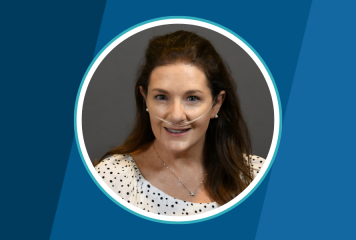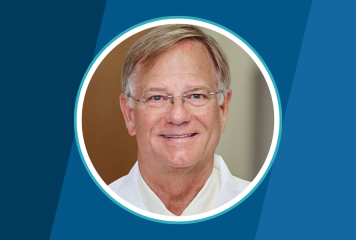Geneva Tatem, MD, is the Program Director for the Pulmonary and Critical Care Medicine and multispecialty Critical Care Medicine fellowships, and Associate Division Head of Pulmonary and Critical Care Medicine at Henry Ford Hospital in Detroit. She is also an Associate Professor of Medicine at the Wayne State University School of Medicine.
Dr. Tatem has served on the ABIM Pulmonary Medicine Board since 2020.
Since 2017, World Lung Day has been observed as a day of advocacy and action for lung health on a global scale, but it still hasn’t received the broad reach and recognition necessary to achieve meaningful change. As a pulmonologist and medical educator with a vested interest in advocacy, it is important to me to raise awareness of the things we can do to impact lung health proactively—not just in the pulmonary community or the medical community, but as a society.
The “big five” lung diseases—asthma, chronic obstructive pulmonary disease, lung infections, tuberculosis and lung cancer—create a huge burden on the health care system and the workforce, and there’s a lot to be done to raise awareness of preventive behaviors and effect policy changes at the legislative level to make an impact on the populations that are disproportionately affected by lung disease.
The health inequities in America and across the world were laid bare by the COVID-19 pandemic; they represent differences in health status and outcomes due to systemic mechanisms which are unjust and avoidable. Health inequities are produced by inequities in other parts of our society. For example, in the U.S., 40% of the population lives in areas with unhealthy levels of air pollution. This is not by choice, but due to policies that impact education, occupation, income and ultimately home and neighborhood environments, and also allow for industrialization of certain areas. So, it’s not surprising to see disparities play out in terms of who is affected by respiratory disease. These same populations were also heavily impacted during the early stages of the COVID-19 pandemic, which demonstrated the critical need for public health policy, funding and initiatives to assure population health.
What was commonly missed in discussions early in the pandemic is that an issue like this cannot be properly addressed if the main focus is on individual behavior such as wearing a mask or handwashing. Those actions were undoubtedly very important, but a population-level issue requires broad, expansive solutions. So as we move forward and re-focus on prevention of chronic lung disease, it is essential that we create policies and pass legislation that more tightly regulates air pollution, air quality and carbon emissions to improve the health of populations that live in areas disproportionately affected by particulate pollution.
We should be taking a broader approach to get to the root of lung health issues. That means talking to legislators and policymakers. I have worked in medical education advocacy, getting in front of legislators to help them understand on a fundamental level what’s at stake when graduate medical education and funding are threatened. The same kind of work is necessary to address disparities in lung health care. As physicians, we have a responsibility to make sure the voices of those people who are less likely to be heard, become heard. We need people in the room who can bring medical knowledge and understanding to those who are making policy decisions.
I encourage you, my fellow physicians, to use your roles as program directors, educators, clinicians and trusted voices in your communities to tackle issues of health disparity and public health at the policy level. On World Lung Day, we are reminded to work together to understand and address issues of inequity that affect millions of people with lung disease. It’s a goal we can work toward across disciplines, every day of the year.



